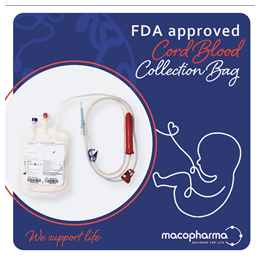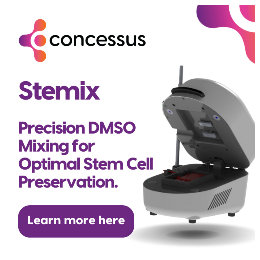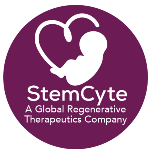Jste zde
Cord Blood Banking for the Nontraditional Family
The idea of preserving your baby’s cord blood may seem a bit unconventional. Especially for those starting a family later in life, considering adoption, or using a surrogate. Over the past five decades, the medical world has positively erupted in its ability to diagnose and treat more health conditions and life-threatening diseases than ever before. In fact, cord blood stem cell transplants and therapies are amongst the most powerful medical advancements of our time.
Many biological parents (father and mother who share a child’s DNA) are introduced to the benefits of cord blood banking and stem cell therapies early in their pregnancy. For these families, the decision to bank their baby’s cord blood typically hinges upon their family’s medical history, existing or future children, and their financial means.
 Over the past few decades, family structures have drastically changed, and nontraditional families are more common and varied. These changes are due to increases in never-married, single parents, divorce, cohabitation, same-sex parenting, multi-partnered fertility, and co-residence with grandparents1.
Over the past few decades, family structures have drastically changed, and nontraditional families are more common and varied. These changes are due to increases in never-married, single parents, divorce, cohabitation, same-sex parenting, multi-partnered fertility, and co-residence with grandparents1.
While biological parents have straight-forward cord blood banking options, the same cannot be said for nontraditional families considering a surrogate or newborn adoption. In these situations, health and medical histories, and information gaps for a child are common. Based on a 2019 study on adult adoptees, the most frequent sought information was medical and health history2.
Although cord blood therapies and transplants are becoming more common in the treatment of children and parents today, educational information on cord blood banking for nontraditional families is unfortunately slim. However, if we look at the statistics and the growing trends of nontraditional families, we would see that an estimated two million LGBT people are interested in adopting3 and that same-sex parents in the United States are four times more likely than different-sex parents to be raising an adopted child4.
 Medical history and information gaps with adoption and surrogacy can be a great concern for many new parents, especially when a child develops a serious illness. Some childhood medical conditions, like cerebral palsy, can be treated with a child’s own cord blood, while others, like pediatric cancer, require a stem cell donor5. The time and stress of finding a biological relative or a matching unrelated donor could mean the difference between life and death. With private cord blood banking, the family may be able to quickly access the child’s own cord blood or the cord blood of a sibling. Researching cord blood banks and securing services well in advance of birth can give nonbiological parents the protection their child may need one day.
Medical history and information gaps with adoption and surrogacy can be a great concern for many new parents, especially when a child develops a serious illness. Some childhood medical conditions, like cerebral palsy, can be treated with a child’s own cord blood, while others, like pediatric cancer, require a stem cell donor5. The time and stress of finding a biological relative or a matching unrelated donor could mean the difference between life and death. With private cord blood banking, the family may be able to quickly access the child’s own cord blood or the cord blood of a sibling. Researching cord blood banks and securing services well in advance of birth can give nonbiological parents the protection their child may need one day.
In 2019, the US Census Bureau reported there were 11 million single parent families with children under the age of 18, and 80% were headed by single mothers6. Gender aside, being a single parent has many unique challenges. Carrying the financial and emotional weight of raising a family without a partner can be overwhelming. In fact, today’s pandemic has merely reinforced many single parents’ biggest fear of becoming terminally ill and leaving their child without someone to care for them. If COVID-19 has taught us anything, it would be the cost of not being prepared. When a child is diagnosed with a serious medical condition, their treatments and hospital stays can easily exceed the cost of cord blood banking. Today, cord blood banking is an affordable investment that can save a parent critical time and money in the long run.
 Today more than ever, grandparents are playing a significant role in the caretaking efforts of their grandchildren. An August 2020 US & World Report article revealed that nearly 3 million children in the United States are being raised by their grandparents7. While all parents worry about their child’s happiness, education, future, and health, grandparents worry in a grand way. Managing a household and a grandchild’s healthcare crises could be overwhelming and devastating for many grandparents. Cord blood banking can lessen the burden on grandparents, and it can be a valuable source of protection throughout a child’s life.
Today more than ever, grandparents are playing a significant role in the caretaking efforts of their grandchildren. An August 2020 US & World Report article revealed that nearly 3 million children in the United States are being raised by their grandparents7. While all parents worry about their child’s happiness, education, future, and health, grandparents worry in a grand way. Managing a household and a grandchild’s healthcare crises could be overwhelming and devastating for many grandparents. Cord blood banking can lessen the burden on grandparents, and it can be a valuable source of protection throughout a child’s life.
A proactive approach to educating nontraditional families, single moms, adoption and surrogate agencies, and even grandparents on the importance of cord blood banking is seriously needed. Especially considering that in the US 1 in 217 people, or 0.46%, will have a stem cell transplant (not just need one, but have one) by age 708, and the odds of a child using its own cord blood stem cells are 1 in 5,000 by the age of 209. Children in nontraditional families should be protected by the medical insurance offered by cord blood banking.
Although cord blood banking many not be an easy or straight forward process for many nontraditional families, it remains an essential safeguard for a child’s future health.
References
- 1. Pearce LD, Hayward GM, Chassin L, Curran PJ. The Increasing Diversity and Complexity of Family Structures for Adolescents. J Res Adolesc. 2018; 28(3):591–608.
- 2. Wrobel GM and Grotevant HD. Minding the (Information) Gap: What do Emerging Adult Adoptees Want to Know about their Birth Parents? Adopt Q. 2019; 22(1):29–52.
- 3. Gates GJ, Lee Badgett MV, Macomber J, Chambers K. Adoption and Foster Care by Gay and Lesbian Parents in the United States. Joint Report by The Charles R. Williams Institute on Sexual Orientation Law and Public Policy and The Urban Institute. 2007.
- 4. Gates GJ. LGBT Parenting in the United States. Report by The Charles R. Williams Institute on Sexual Orientation Law and Public Policy, 2013.
- 5. Parent's Guide to Cord Blood Foundation. Can a child with cancer be treated with his or her own cord blood? FAQ Date last modified: 20200804
- 6. Single Mother Guide. Single Mother Statistics. Accessed Dec. 2020
- 7. Thompson D. U.S. Grandparents Are Raising Millions of Kids, and It's Tough. U.S. News & World Report. Published 20200804
- 8. Nietfeld JJ, Pasquini MC, Logan BR, Verter F, Horowitz MM. Lifetime Probabilities of Hematopoietic Stem Cell Transplantation in the U.S. Biol. Blood Marrow Transplant. 2008; 14(3):316–322.
- 9. Parent's Guide to Cord Blood Foundation. Odds of Use. Date last modified: 20181212.




 Emma Berry is the Head of Marketing for StemCyte Regenerative Therapeutics in Baldwin Park, CA. Established in 1997, StemCyte is a hybrid bank with a massive private and public cord blood inventory and international presence. StemCyte actively supports clinical trials using cord blood and cord tissue stem cells in the treatment of many life-threatening diseases and health conditions, such as autism, diabetes, acute and chronic stroke, spinal cord injury, and more. StemCyte is one of the few cord blood banks to hold accreditations from both the American Association of Cord Blood Banks (AABB) and the Foundation for the Accreditation of Cellular Therapy (FACT). To find out more please visit
Emma Berry is the Head of Marketing for StemCyte Regenerative Therapeutics in Baldwin Park, CA. Established in 1997, StemCyte is a hybrid bank with a massive private and public cord blood inventory and international presence. StemCyte actively supports clinical trials using cord blood and cord tissue stem cells in the treatment of many life-threatening diseases and health conditions, such as autism, diabetes, acute and chronic stroke, spinal cord injury, and more. StemCyte is one of the few cord blood banks to hold accreditations from both the American Association of Cord Blood Banks (AABB) and the Foundation for the Accreditation of Cellular Therapy (FACT). To find out more please visit